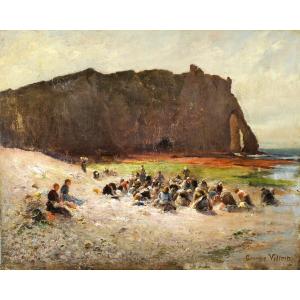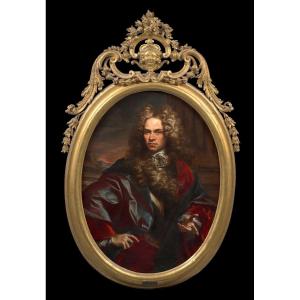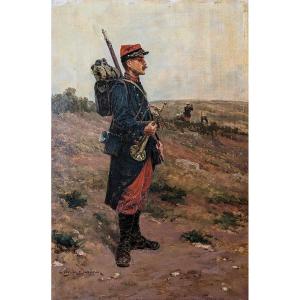(Lille 1806 – Paris 1856)
Portrait of a young girl
Oil on canvas
H. 92 cm; L. 73 cm
Signed upper left, dated 1837
When he came into the world in Lille in 1806 into a family of not very well-off artisans, the doctors who delivered him doubted for a moment that this being could only live a few hours, it was so counterfeited. Ducornet was born without arms or thighs, with no other apparent joint movement than the pelvis, and feet where there were only four fingers including the big toe; However, later, it was only with these means of action that he drew and painted his pictures, also using his mouth. From the age of twelve he attended the Lille drawing school under the direction of Watteau de Lille, of which he became one of the most skilled students. Drawing from the model and copying the masters at the museum, he won the First Prize for drawing in his hometown in 1822 at just 16 years old. The mayor of Lille, the Count of Muyssard, obtained from the municipal council the following year a sum of 300 francs to facilitate the continuation of his studies which he carried out in Paris in the Guillon-Lethière workshop. Baron Gérard who was his protector, first painter of the regime, went to Charles X who granted a pension to Ducornet from his personal fund. Thanks to these subsidies, he was able to live and perfect his skills at the Ecole des Beaux-Arts, where he competed for the Prix de Rome from 1828 to 1831, without success. The favor of this painter did not suffer from political reversals and until his death in 1856 the Superintendence of Fine Arts assured him of numerous commissions. He regularly participated in the Parisian Salons, obtaining a third class medal in 1840 with The Death of the Madeleine (Lille, Saint-André church) then a second class medal the following year with The Rest of the Holy Family in Egypt (Paris, church of Saint-Louis-en-l’Ile). Critics always mention the artist's infirmity and the Salon booklets each time mention "artist born without arms drawing with his feet"; contemporaries could not fail to admire his courage: “seeing the work of this armless painter, can we not admire the power of the human will and not see the most dazzling triumph of intellectual force”. As they appear to us today, Ducornet's works allow us to measure the heroism of this artist, overcoming infirmity to rise to the level of the very good historical productions of the moment.
This portrait, painted at the age of thirty by the painter, is composed against a landscape background, accompanied by a flowering rosebush. This young woman is also holding a slightly open rose as well as another in bud in her hand. Should we see here a synonym for a young girl who is not yet a woman?


























 Le Magazine de PROANTIC
Le Magazine de PROANTIC TRÉSORS Magazine
TRÉSORS Magazine Rivista Artiquariato
Rivista Artiquariato
